(This article by Roberta Naas first appeared on Forbes.com.)
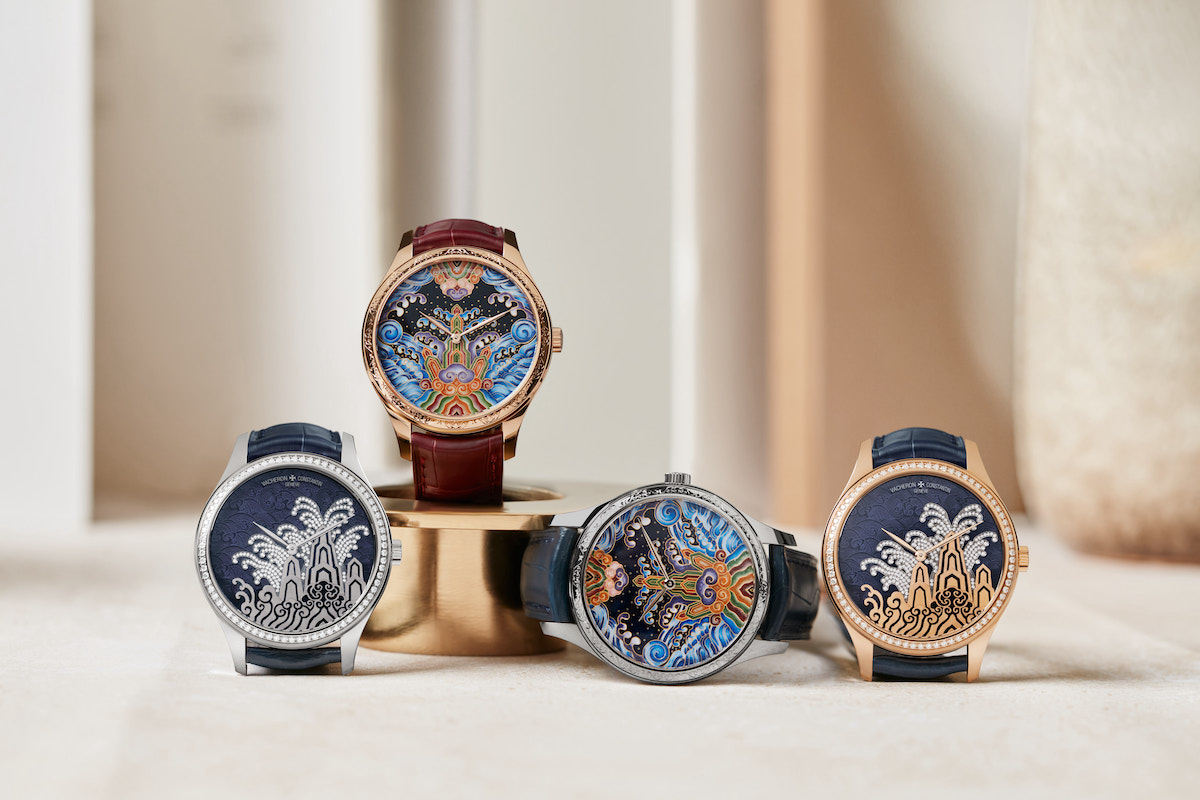
Vacheron Constantin Tribute to the traditional symbols watches
Vacheron Constantin has a long and storied history in the art of watchmaking, masterfully blending the Métiers d’Arts that accompany the creation of some of the finest watches in the world. As the oldest continually operating Swiss watch brand, this Maison is dedicated to preserving and revitalizing the arts that have been passed on for generations, continuing their breadth and scope in contemporary timepieces. Such is the case with the new Tribute to the traditional symbols watches recently unveiled.
As a homage to the ancient Chinese Cultures, Vacheron Constantin unveils four limited-edition watches honoring the motifs of the “Seawater Cliff” that emerged as a decorative symbol from the Ming and Qing dynasties back in the 14th century.
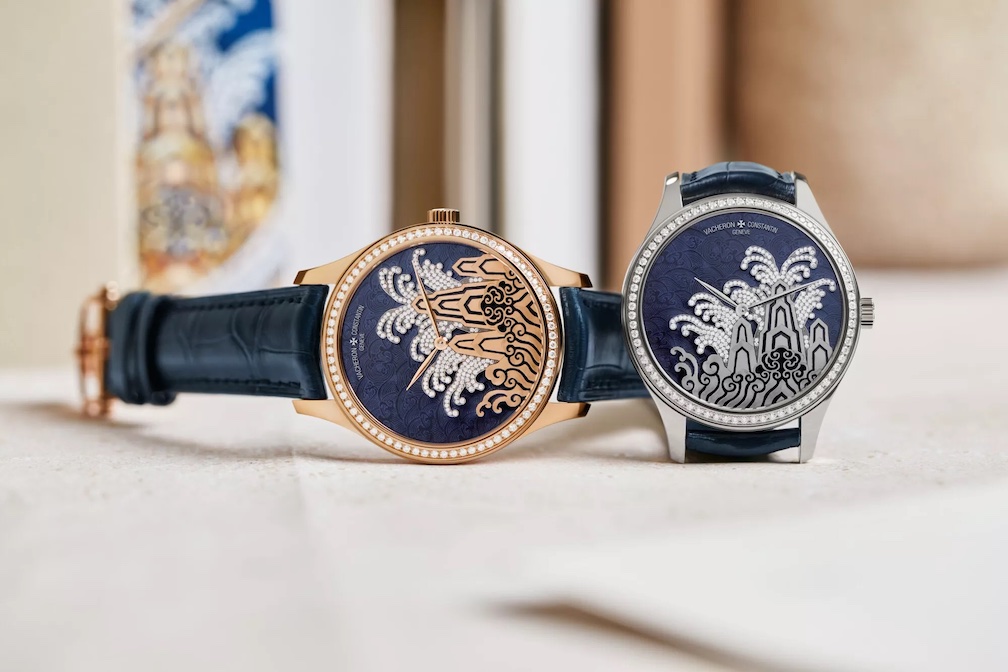
Just four versions of the Vacheron Constantin Tribute to the traditional symbols watches will be made.
For the new collection, the brand worked with Mr. Song, the former Associate Research Librarian of Palace Museum, housed in Beijing’s Forbidden City. The result is two different interpretations of the legendary Seawater Cliff motif that was officially named under Emperor Wanli (1573-1620). The design was reserved for the Imperial family. It showcases the tides washing against the cliff and symbolizes strength, stability and resilience, as well as resistance to change.
The motifs were also embroidered on silk ceremonial garments called dragon robes, generally neatly sewn into the lower hem and cuffs, and were meant to symbolize great success for those who wore the robes.
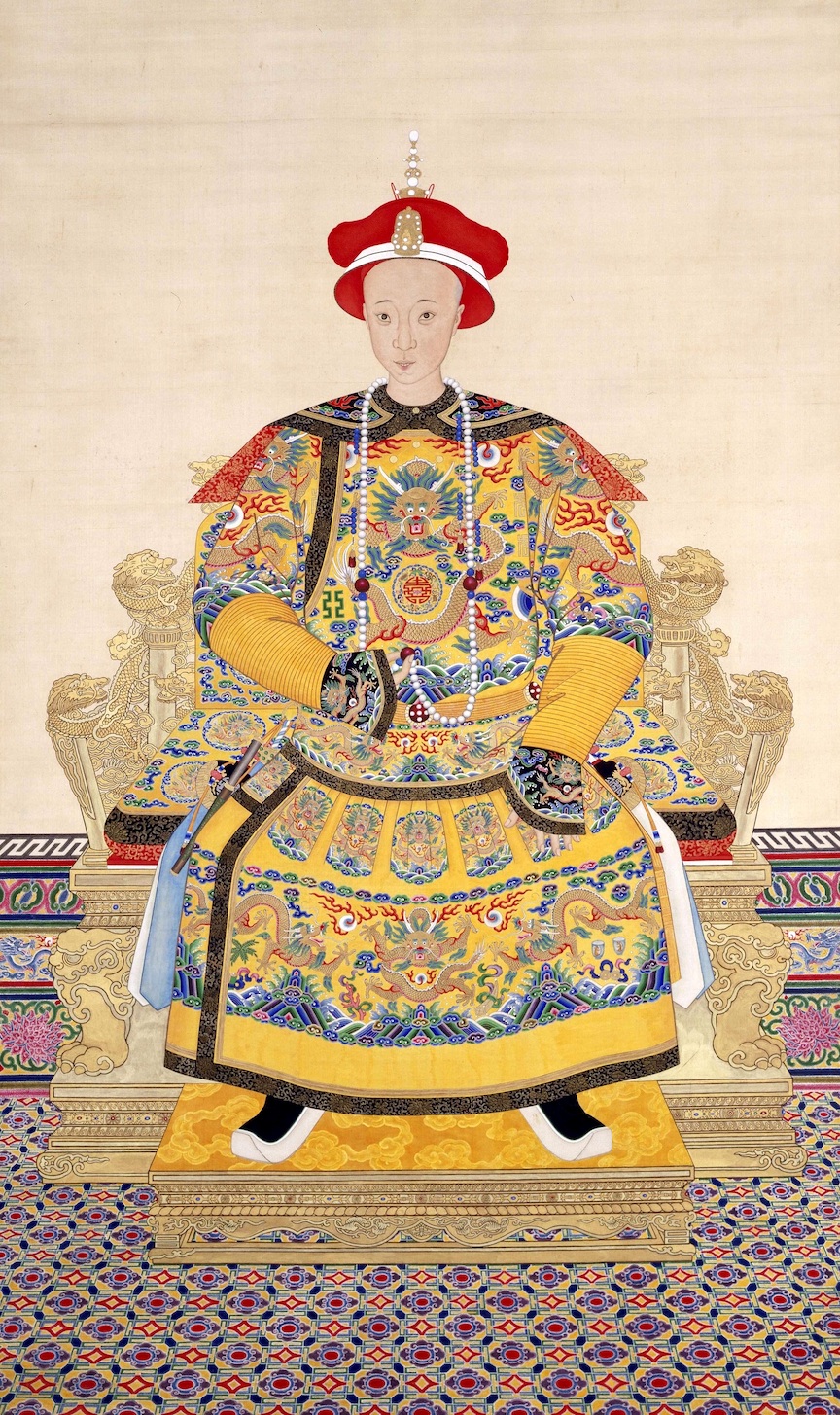
The motif for the Seawater Cliff was often embroidered onto ceremonial robes of the Imperial family.
Each of the motifs of the watches is created in 18-karat white gold and 18-karat rose gold, with slightly different colorations on the dials. The cases measure 38mm in diameter and each is powered by the brand’s Caliber 2460 mechanical movement with central hours and minutes indication. The movement offers 40 hours of power reserve and is visible via a transparent sapphire case back. Also visible is a finely engraved 22-karat gold rotor that also recalls the waves and the tides.
The Métiers d’Arts Eternal Flow version is created using cloisonne’ enamel and engraving with rich hues of colors that dance against a dark night sky ablaze with stars. The hues used in the enamel work recall the traditional Chinese celebratory colors of blues, green, orange, gold and purpled. The cloisonné technique, also called Jingtai Blue, pays homage to Emperor Jingtai of the Ming Dynasty.
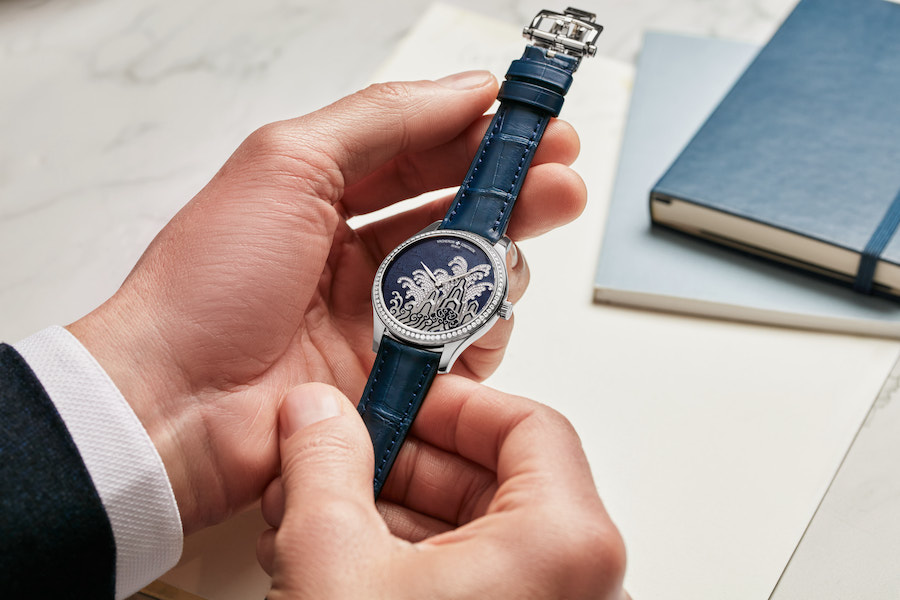
Just 15 of each of the Vacheron Constantin Tribute to the traditional symbols watches will be made.
The intricate and elaborate dial is created by an artisan who first lays 220 thin gold wires into position on the dial to form the Seawater Cliff motif. The space between the gold wires will later be filled with enamel. However, just laying each of the 220 wires into place takes more than 50 hours of detailed craftsmanship. Later, more than 70 hours are dedicated to painting the enamel and firing it, layer after layer, to attain the rich depths of color the artist desires. Each dial is painted by hand and each is unique.
As if the dial work is not spectacular enough, the outer bezel of each watch is hand engraved with a special bat motif that symbolizes happiness and good fortune. The bat motif is not literal, but rather is created using a frieze technique of arabesques and swirls.
The second motif, the Tribute to traditional symbols Moonlight Slivers watch is created using Grand Feu enameling, engraving and gem setting. In both the white gold and pink gold versions, the background is rich blue enamel and the mountain wall is created in monochrome colors: silver hues for the white gold version and golden for rose gold version.
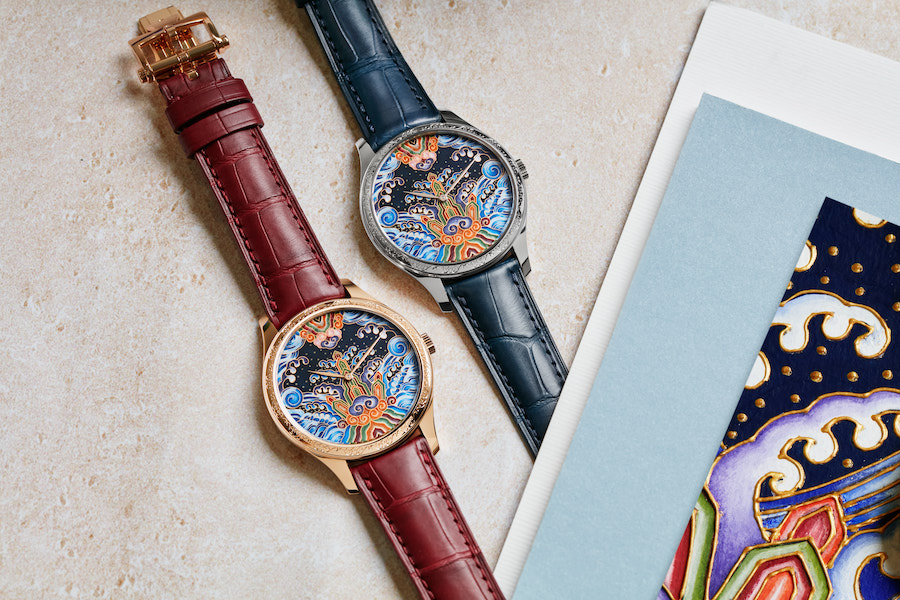
The watches are powered by a mechanical movement that offers hours and seconds, as well as 40 hours of power reserve.
The creation of the dial includes hollowed waves, raised diamond-set sections in the mountains and several sections that depict the seas in various depths and tones achieved via multiple paintings and firings. Each of the sea waters rushing against the mountain is created using brilliant-cut diamonds meticulously handset for brilliance and allure. Just 15 pieces of each watch will be made.
This foray into the ancient Chinese arts, or the arts of many civilizations, is nothing new for Vacheron Constantin. The brand has regularly excelled at Metiers’ d’Arts and works with museums around the world, like the MET and The Louvre to recreate masterpieces on the wrist.
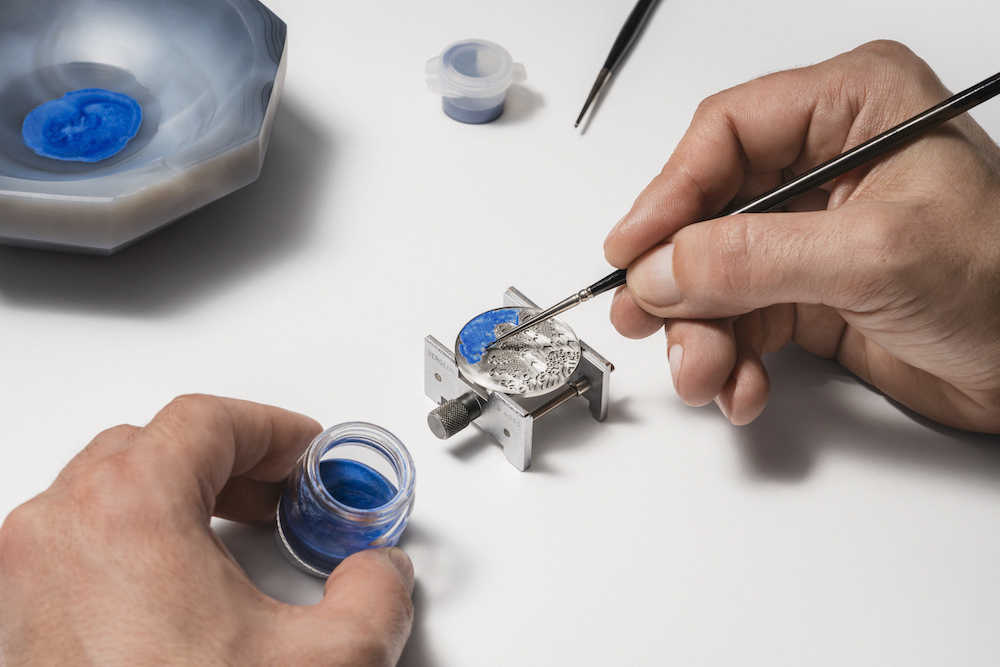
Vacheron Constantin is dedicated to preserving the Metiers D’Arts involved in watchmaking.





